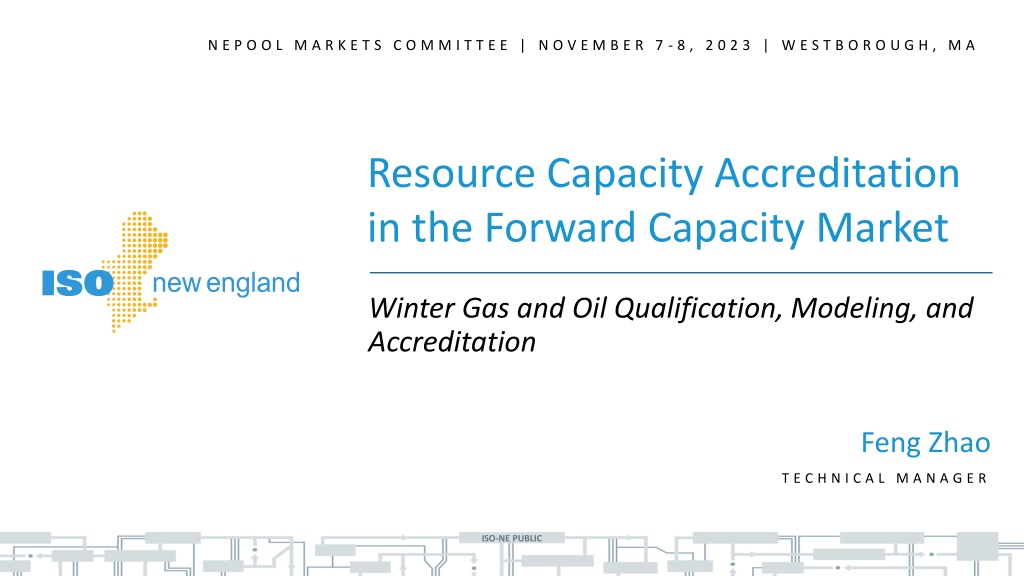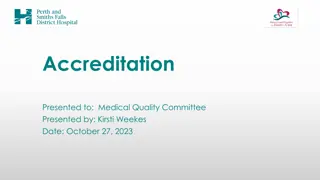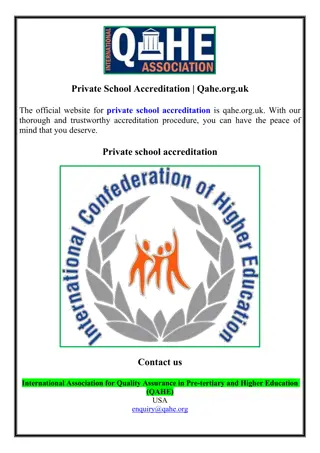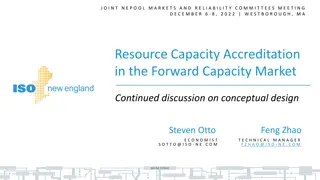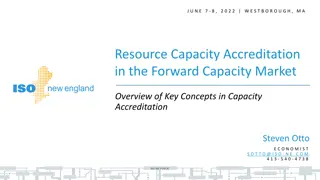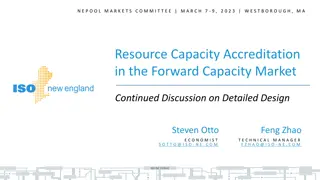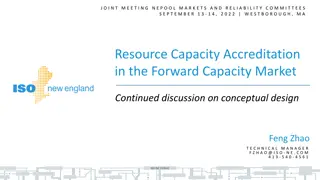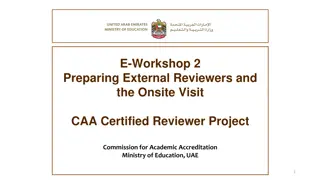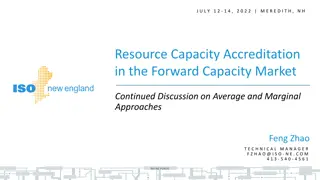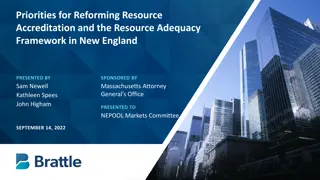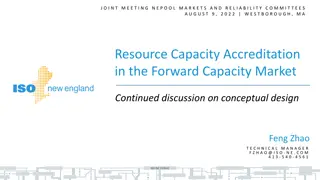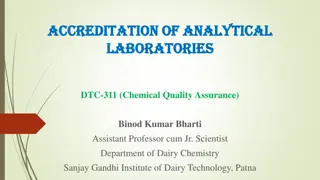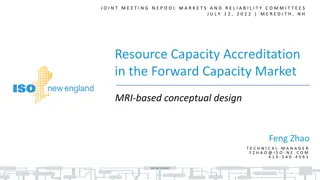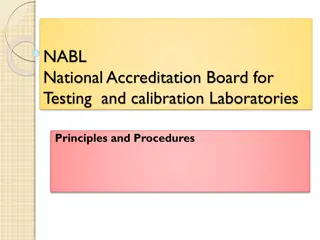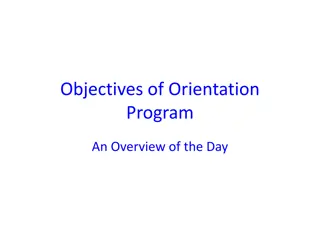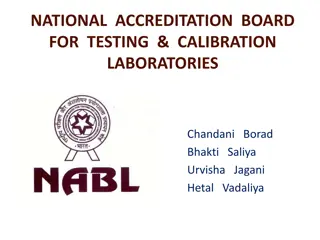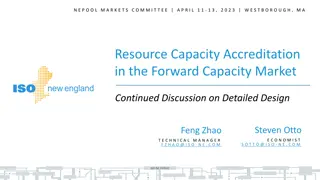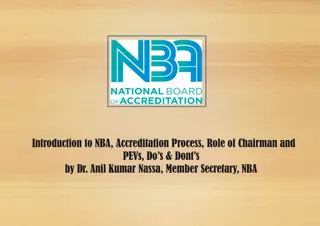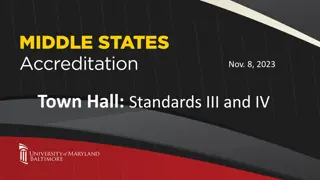Resource Capacity Accreditation in the Forward Capacity Market
The presentation discusses the Resource Capacity Accreditation (RCA) project in the Forward Capacity Market (FCM) by ISO-NE, aiming to improve accreditation processes to support a clean-energy transition. It emphasizes modeling and accrediting gas and oil resources for resource adequacy as the energy mix evolves, addressing a software bug and adjusting project schedules. The discussion covers de-rating frameworks, seasonal risk assessments, stakeholder schedules, and key takeaways.
Download Presentation

Please find below an Image/Link to download the presentation.
The content on the website is provided AS IS for your information and personal use only. It may not be sold, licensed, or shared on other websites without obtaining consent from the author. Download presentation by click this link. If you encounter any issues during the download, it is possible that the publisher has removed the file from their server.
E N D
Presentation Transcript
N E P O O L M A R K E T S C O M M I T T E E | N O V E M B E R 7 - 8 , 2 0 2 3 | W E S T B O R O U G H , M A Resource Capacity Accreditation in the Forward Capacity Market Winter Gas and Oil Qualification, Modeling, and Accreditation Feng Zhao T E C H N I C A L M A N A G E R ISO-NE PUBLIC
WMPP ID: 157 Resource Capacity Accreditation in the Forward Capacity Market Proposed Effective Date: FCA 19 (with a one-year delay) The Resource Capacity Accreditation (RCA) project proposes improvements to ISO-NE s accreditation processes in the Forward Capacity Market (FCM) to further support a reliable, clean-energy transition by implementing methodologies that will more appropriately accredit resource contributions to resource adequacy as the resource mix transforms A software bug triggered the review of winter risk modeling and an adjustment to the RCA project schedule While the region is assessing prompt and/or seasonal options for the 2028-29 Capacity Commitment Period (CCP 19), this presentation resumes the RCA discussions under a forward, annual construct and targets proposed RCA improvements for the nineteenth Forward Capacity Auction (FCA 19) with a one-year delay The focus of today s presentation is to review a revised approach to qualifying, modeling, and accrediting gas and oil resources in the winter ISO-NE PUBLIC 2
WMPP ID: 157 Resource Capacity Accreditation in the Forward Capacity Market Proposed Effective Date: FCA 19 (with a one-year delay) Outline of today s discussion: Review of Previously Proposed Gas and Oil De-rating Framework (slides 5-8) Highlight of Revised Gas and Oil Models in De-rating Framework (slides 10-11) Revised Gas and Oil Models in Seasonal Risk Assessment Process (slides 13-19) Revised Gas and Oil Models in Resource Accreditation Process (slides 21-32) Key Takeaways (slide 34) Stakeholder Schedule (slides 36-37) ISO-NE PUBLIC 3
REVIEW OF PREVIOUSLY PROPOSED DE-RATING FRAMEWORK ISO-NE PUBLIC ISO-NE PUBLIC 4
Introduced December 2022 MC/RC Meeting Previously Proposed De-rating Framework The previously proposed de-rating frameworkhad three components: 1. Resource Qualification:Determine portions of a gas resource s winter Qualified Capacity (QC) that are backed byfirm gas(no de-rating) or non-firmgas(subject to de-rating), and de-rated winter QC of an oil resource based on its storage capability in the qualification process De-rated Oil Capacity Gas Forecast Winter Risk Assessment Resource Qualification Adequacy Risk Assessment 2. Risk Assessment (with a focus on winter):Develop regional gas forecasts for the winter period, and model aggregated gas resources and individual de-rated oil resources in the Resource Adequacy Assessment (RAA) to reflect adequacy risk in winter Gas Capacity De-rating Factor Determination 3. Resource Accreditation:Use an equivalencing process to determine the capacity De-rating Factor (DF) for gas capacity without firm gas contracts, and calculate Qualified Marginal Reliability Impact Capacities (QMRICs) using individual gas and oil thermal resource models with De-rated QC Resource Accreditation Resource MRI/QMRIC Calculation * The diagram is modified to include both gas and oil resources ISO-NE PUBLIC 5
Previously Proposed De-rating Framework, Contd The de-rating framework was proposed to reflect the winter energy limitations of gas and oil resources through winter De-rated QC (DQC) Gas energy limits were represented by a weather-correlated hourly pipeline gas profile and a monthly Liquefied Natural Gas (LNG) storage resource in the winter period (Dec. through Feb.) Firm gas contracts were compared to corresponding fuel requirements (daily and seasonal) to calculate the gas capacity supported by these contracts An equivalencing process was used to identify the uniform gas capacity DF that resulted in the same winter risk as the gas energy limits Gas resource DQC is the sum of the gas capacity associated with firm gas contracts (not de-rated) and the de-rated gas capacity without firm gas contracts Oil resources usable tank sizes were compared to an oil storage requirement to obtain oil resource DQC Gas and oil resources were modeled as individual thermal resources with their DQC and EFORd in the RAA base case for accreditation Resource MRIs and QMRICs were derived from these individual resource models ISO-NE PUBLIC 6
Introduced January 2023 MC/RC Meeting Models in Previous De-rating Framework Equivalencing Resource Accreditation Resource Qualification Risk Assessment Aggregated Gas Energy Limits Gas Capacity Non-firm Fuel Gas Capacity Firm Fuel Gas-only Resources Aggregated Profile representing Hourly Available Pipeline Gas and Aggregated Storage representing Monthly Available LNG Individual Gas-only Resources with DQC and EFORd Gas Capacity Non-firm Fuel Gas Capacity Firm Fuel Oil DQC Tank Size Individual Dual-fuel Resources with DQC and EFORd Dual-fuel Resources Individual Oil Capacity Limits Individual Oil Resources with Oil DQC and EFORd Individual Oil Resources with DQC and EFORd Oil DQC Tank Size Oil Individual Oil Resources with DQC and EFORd Resources * The diagram is modified to include both gas and oil models in the previous de-rating framework ISO-NE PUBLIC 7
Motivations for Enhancements The ISO s review of the previously proposed winter gas and oil models revealed: Separate modeling of the pipeline gas and LNG for generation requires capturing the complex interplay between pipeline, LNG and LDC systems Gas supply for generation is typically restricted on a daily timeframe rather than a monthly or seasonal timeframe The energy limitation of oil resources has a significant impact on the winter risk level Upon further analysis, the ISO has determined that the winter risk needs to be more accurately reflected by revising the previous winter gas and oil models to better represent their energy limitations ISO-NE PUBLIC 8
REVISED GAS AND OIL MODELS ISO-NE PUBLIC ISO-NE PUBLIC 9
Modeling Enhancements to Gas and Oil Resources The three-component framework (qualification, risk assessment, and resource accreditation) remains the same The following model enhancements for gas and oil resources related to their energy limitations in the winter have been incorporated into the seasonal risk assessment: Represent the total available gas (pipelines and LNG) for generation as hourly profile (derived from daily energy limits) Represent the oil limitation of aggregated Distillate Fuel Oil (DFO) resources as bi-weeklyoil energy limits The revised accreditation process will now: Model the aggregated gas profile, and calculate the gas fleet s total winter accreditation value for the gas profile Oil resources continue to be accredited as individually de-rated resources Assign EFORd-based winter MRIs for gas resources, and derive gas DF using those MRIs instead of an equivalencing process ISO-NE PUBLIC 10
Revised Models in the De-rating Framework Seasonal Risks Qualification Risk Assessment Resource Accreditation Gas Capacity Non-firm Gas Gas Capacity Firm Gas Aggregated Gas Energy Limits Gas-only Resources A Profile Resource representing Hourly Available Total Gas (with Allocation of the Fleet value to individual resources) A Profile Resource representing Hourly Available Total Gas Gas Capacity Non-firm Gas Gas Capacity Firm Gas Oil Capacity Tank-size Aggregated DFO Energy Limits Dual-fuel Resources A Storage Resource representing Bi-weekly Available DFO Oil Individual DFO Resources with Oil DQC and EFORd Individual RFO Capacity Limits Individual RFO Resources with EFORd Oil Capacity Tank-size Oil Individual RFO Resources with EFORd Resources Major changes are circled in red ISO-NE PUBLIC 11
REVISED GAS AND OIL MODELS IN SEASONAL RISK ASSESSMENT ISO-NE PUBLIC ISO-NE PUBLIC 12
Introduced February 2023 MC/RC Meeting The Role of Seasonal Risks in QMRIC Calculation A resource s QMRIC reflects its annual contribution to adequacy, which includes summer and winter contributions during the simulated summer and winter MRI reliability hours, respectively ??? = ???????? ????????? + ???????? ????????? ?? ?????????? ?????????? ?????????? Summer contribution or QMRICSummer Annual contribution or QMRIC Winter contribution or QMRICWinter The resource s seasonal MRI (hrs/yr) reflects its expected performing time associated with its seasonal QC during the MRI reliability hours of the season With zero risk in one season, the MRI of the season is 0 and the resource s QMRIC will be solely determined in the other season The seasonal risk levels play an important role in determining QMRIC ISO-NE PUBLIC 13
Purpose of Seasonal Risk Assessment Due to the lack of seasonal resource adequacy criteria, the proposed seasonal risk assessment will establish the seasonal risk levels under expected resource performance and 1-in-10 load conditions Winter risk is mainly driven by energy limitations (e.g., gas and oil) Summer risk is mainly driven by capacity limitations (e.g., outages) These seasonal risk levels will be measured in LOLE to be consistent with the 1-in-10 annual criterion and used as inputs for the resource accreditation process ISO-NE PUBLIC 14
Revised Gas Model for Seasonal Risk Assessment Under the new proposal, the gas limitation for the winter period will be represented by HDD-correlated daily total available gas (including pipeline gas and LNG) The relationship between daily available gas and HDD will be formulated based on historical data The daily available gas will be converted to the daily total gas generation using the gas fleet heat rate The daily total gas generation will be distributed to hours of the day based on the historical gas generation pattern The revised gas model will more accurately represent the total available gas for generation in the winter period ISO-NE PUBLIC 15
Revised Gas Model for Seasonal Risk Assessment, Cont d Under the new proposal, the aggregated gas capacity (from gas- only and dual-fuel resources) will be modeled as a single hourly profile for the winter period The single profile model for total available gas replaces the previously separate pipeline and LNG models for the winter period The gas-only and dual-fuel resources will continue to be modeled as individual thermal resources at their winter QC (without energy limitations) in other months * Model details will be presented at upcoming RC meetings ISO-NE PUBLIC 16
Revised Oil Model for Seasonal Risk Assessment Under the new proposal, an aggregated oil energy limit will be modeled in the seasonal risk assessment Based on historical cold weather patterns, a two-week timeframe will be used for representing the oil energy limitation The limit will represent total oil supply for aggregated DFO resources within two weeks The limit will be established based on historical starting inventory levels and replenishments No energy limit is considered for Residual Fuel Oil (RFO) units as they typically have large tank sizes and their large historical inventory levels allow for continuous operation over two weeks The aggregated energy limit will provide a more accurate characterization of the winter risk impact of oil limitations in the winter period ISO-NE PUBLIC 17
Revised Oil Model for Seasonal Risk Assessment, Cont d Under the new proposal, the total DFO capacity (from oil-only and dual-fuel resources) will be modeled as an aggregated storage resource with energy limits over two-week periods in the winter risk assessment On a rolling basis, the winter period (December through February) will be divided into a series of independent two-week assessment periods During each of these two-week assessment periods, the total amount of energy from DFO units will be limited DFO resources will continue to be modeled as individual thermal resources for other months (March to November) RFO resources will be modeled as individual thermal resources for all months * Model details will be presented at upcoming RC meetings ISO-NE PUBLIC 18
Key Takeaways of Revised Oil and Gas Models in Seasonal Risk Assessment The newly proposed gas and oil models better capture the characteristics of gas and oil energy limitations and historical performance in the winter period, and therefore are expected to yield a more accurate winter risk level The seasonal risk levels will serve as inputs for the accreditation process ISO-NE PUBLIC 19
REVISED GAS AND OIL MODELS IN RESOURCE ACCREDITATION ISO-NE PUBLIC ISO-NE PUBLIC 20
Relationship between Seasonal Risk Assessment and Resource Accreditation The seasonal risk assessment process will establish the summer and winter risk levels, measured in LOLE consistent with the annual risk criterion The seasonal risk levels will be used for the construction of the RAA base case Seasonal load adjustments will be used to obtain the seasonal risk levels The relationship of the two processes is illustrated as follows: Seasonal Risks Revised Resource Accreditation Process Revised Seasonal Risk Assessment Process The accreditation process calculates resource MRIs and QMRICs ISO-NE PUBLIC 21
Revised Gas and Oil Models in Accreditation Process The RAA base case will be used for resource accreditation and demand curve construction using the seasonal risk targets established in the risk assessment process Under the new proposal, the RAA base case for accreditation will use the following gas and oil models: Gas capacity (from gas-only and dual-fuel) will use the same aggregated hourly profile as the seasonal risk assessment process Oil capacity (from oil-only and dual-fuel) including RFOs and DFOs will be modeled as individual de-rated resources (same as previously proposed oil model) ISO-NE PUBLIC 22
Different Oil Models in Risk Assessment Process and Accreditation Process Bi-weekly energy limits will be modeled for the aggregated DFO capacity in the seasonal risk assessment process, while de-rated individual DFOs will be modeled in the resource accreditation process While the bi-weekly energy limits better characterize the system risk impact of oil supply constraints including initial inventory and replenishment, they are not suitable for individual oil resource accreditation since unlike gas resources, oil resources do not share a common infrastructure for their stored fuel Without accurately modeling the timing of oil replenishment, the bi-weekly energy limit may link multiple loss of load events during a 2-week period, resulting in an overstated duration of MRI reliability events Different models are used in the two processes with different focuses: the risk assessment process focuses on system risks based on expected system conditions, and the accreditation process focuses on individual resource accreditations based on infrastructure limitations ISO-NE PUBLIC 23
Fuel Requirements The following requirements will continue to be used to qualify the capacity associated with gas arrangements and oil storage capability: Daily Operating Hours Requirement (DOHR) Seasonal Operating Hours Requirement (SOHR) Oil Storage Hours Requirement (OSHR) The application of these requirements remains unchanged Values are being reviewed and will be presented at the January MC ISO-NE PUBLIC 24
Fuel-backed Capacity Qualification Volumes of gas contracts or oil storage capability will be converted to hours of operation, i.e., Daily Operating Hours (DOH), Seasonal Operating Hours (SOH), and Oil Storage Hours (OSH) The operating hours associated with firm gas contracts or oil storage capability will be compared to the corresponding fuel requirements to determine the capacity associated with firm gas contracts or oil storage capability (see LAI s February Presentation) ISO-NE PUBLIC 25
Revised Gas Accreditation: Gas Fleet Value Under the revised proposal, the aggregated gas profile modeled in the accreditation process will be used to calculate the total gas capacity s winter contribution, i.e., ??????????? The calculation of the gas fleet s winter QMRIC component follows a similar process for other profile modeled resources The gas profile will represent all gas available for generation, whether contracted or not; the gas fleet s winter value will represent the total accreditation value of all gas capacities, whether backed by firm gas contracts or not ???????? ISO-NE PUBLIC 26
Revised Gas Accreditation: Individual Gas MRIs Under the new proposal, gas resources will be represented by the aggregated gas profile instead of individual gas models Thus individual gas resource MRIs cannot be derived directly from the RAA base case without individual models A gas resource i s winter-period MRI will be calculated as ????????????????= (1 ??????) ?????????????????????? Perfect capacity s winter-period performance The above calculation of gas MRI represents the gas resource s winter-period performance by discounting the perfect capacity resource s performance with the gas resource s EFORd ISO-NE PUBLIC 27
Revised Gas Accreditation: Total Value of Gas Capacity without Firm Gas Contracts With individual gas resources winter-period MRIs, the winter accreditation value associated with gas resource i s gas capacity that is backed by firm gas contracts will be: ???????= ?????????,??????? ????????????????/?????????? ??????,?????? The total value of gas capacity without backing of firm gas contracts is the remaining value after carving out the value associated with firm gas contracts, i.e., ??????????= max(0,??????????? ???????? ???????) ????? ??????????? ??????,?????? ? ISO-NE PUBLIC 28
Revised Gas Accreditation: Gas DF and Winter Accreditation Value The uniform gas de-rating factor will reflect the ratio of the above total gas capacity value without firm gas contracts from the would-be full accreditation value, i.e., ?????????? ????? ??????????? ?? = 1 ??????????,?????????? ????????????????//?????????? Full value The above gas DF is calculated using the winter-period MRIs calculated in Slide 27 instead of the equivalencing process Gas resource i s De-rated QC (DQC) will be the sum of the capacity backed by firm gas contracts and a de-rate of the remaining capacity without firm gas, i.e., ????= ?????????,???????+ (1 ??) ?????????,?????????? With gas resource i s winter-period MRI, its winter accreditation value, or winter QMRIC component, will be ???? ????????????????/?????????? ISO-NE PUBLIC 29
Oil Resource Accreditation The oil resource accreditation framework remains the same as the previous proposal The de-rated oil capacity, or DQC, will be calculated by comparing the oil storage capability with Oil Storage Requirement (OSR) Oil resources (both RFOs and DFOs) will be modeled as individually de- rated thermal resources (with DQC and EFORd) in the RAA base case for accreditation An oil resource s winter-period MRI will be calculated from the individual oil model in the RAA base case An oil resource s winter accreditation value will be: ????????????????/?????????? ???? ISO-NE PUBLIC 30
Dual-fuel Resource Accreditation Under the new proposal, a dual-fuel resource s winter QC will be composed of oil capacity backed by oil storage capability (???????????????), gas capacity backed by firm gas contracts (???????????????), and gas capacity without firm gas contracts (??????????????????) The calculation of the oil capacity associated with storage capability or the gas capacity associated with firm contracts will continue to be based on comparing with corresponding fuel requirements The oil capacity will be modeled as an individual thermal resource, and the gas capacity will be treated as part of the gas fleet profile The winter-period accreditation value of a dual-fuel resource will be the sum of accreditation values associated with oil and gas capacities ISO-NE PUBLIC 31
Key Takeaways of Revised Gas and Oil Models in Resource Accreditation Resource accreditation will be based on the seasonal risk levels established from the seasonal risk assessment process Gas and oil capacities associated with firm fuel will be calculated by comparing with corresponding fuel requirements Gas capacities will be modeled as an aggregated profile and oil resources will be modeled as individually de-rated thermal units for the winter period The winter-period gas fleet accreditation value will be calculated from the aggregated profile, and allocated to individual gas resources using EFORd-based individual gas resource MRIs ISO-NE PUBLIC 32
KEY TAKEAWAYS ISO-NE PUBLIC ISO-NE PUBLIC 33
Key Takeaways The RCA stakeholder process will continue under a forward, annual construct and targets FCA 19 implementation with a one-year delay The ISO proposes enhancements to its gas and oil models to better characterize the winter risk factors in the seasonal risk assessment process The resulting seasonal risk levels will be used as inputs to construct the base case for accreditation The gas accreditation is modified with the aggregated profile model replacing individual models and the allocation of the gas fleet s total winter value replacing the individual resource accreditation ISO-NE PUBLIC 34
STAKEHOLDER SCHEDULE ISO-NE PUBLIC ISO-NE PUBLIC 35
Stakeholder Process - Overview There are several broad phases laid out in the stakeholder process: RCA Refresher: October 2023 Conceptual & Detailed Design: November 2023 March 2024 Finalize Design, Review Tariff Language, and Stakeholder Amendments: April 2024 June 2024 Voting: July 2024 (Technical Committees) and August 2024 (Participants Committee) In addition, there are several key dates for the revised impact analysis projected in the process: January 2024: Review revised input assumptions and scenarios February 2024 May 2024: Review available results June 2024: Final report 2023 2024 Q4 Q1 Q2 Q3 Q4 O N D J F M A M J J A S O N D Final Design, Review Tariff, and Amendments Current Schedule Conceptual and Detail Design MC/RC Vote PC Vote File Eff. Date Refresher Review Revised IA Input Assumptions and Scenarios Final IA Report Review Available IA Results ISO-NE PUBLIC 36
Parallel Stakeholder Processes While the ISO continues to evaluate plans of moving to prompt and/or seasonal auctions for CCP 19 and beyond, it is preparing to implement RCA for CCP 19 with the auction delayed to 2026 Below are the parallel stakeholder processes associated with these FCA 19- related efforts 2023 2024 Q4 Q1 Q2 Q3 Q4 O N D J F M A M J J A S O N D RCA Conceptual and Detail Design Final Design, Review Tariff, and Amendments MC/RC Vote PC Vote File Eff. Date Forward, Annual (for FCA 19 if delayed) Refresher Review Tariff; MC Vote FCA 19 PC Vote File Eff. Date One-Year Delay ISO recommendation on whether to develop prompt proposal Alternative FCM Commitment Horizons Analysis - Scope, Methodology, and Findings ISO-NE PUBLIC 37
